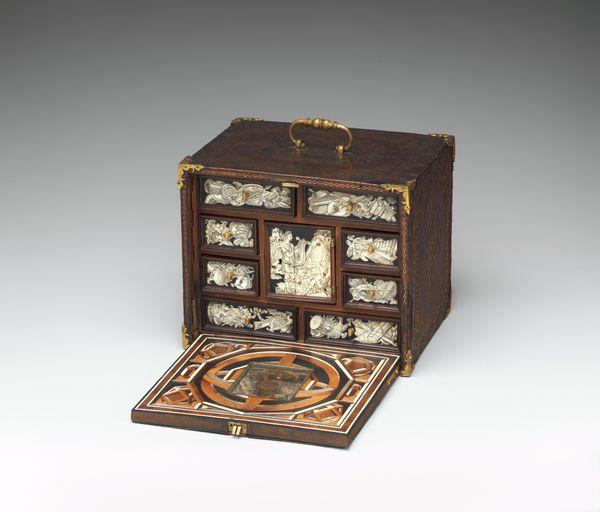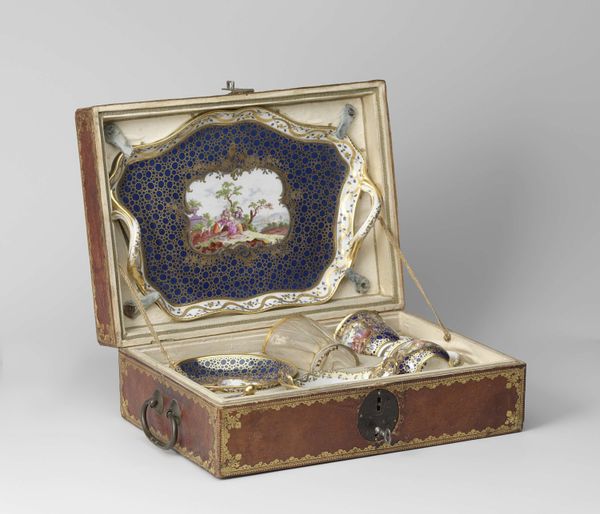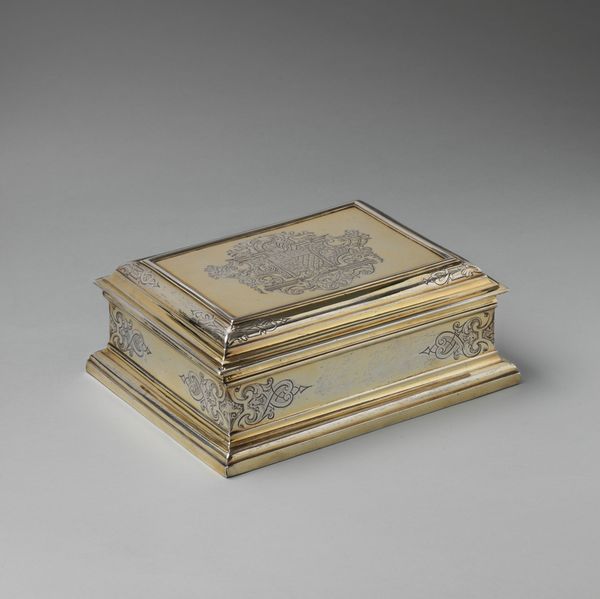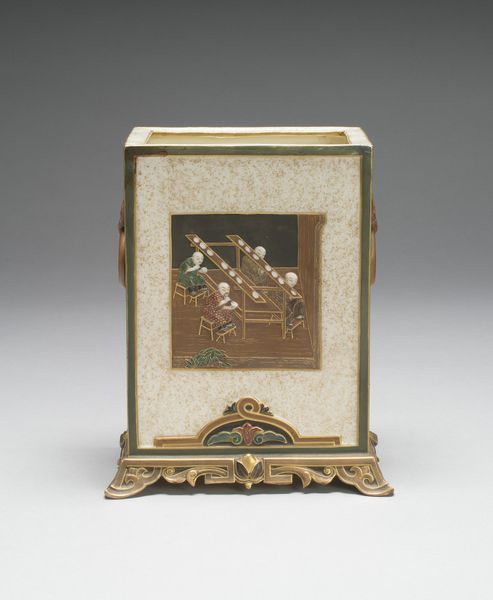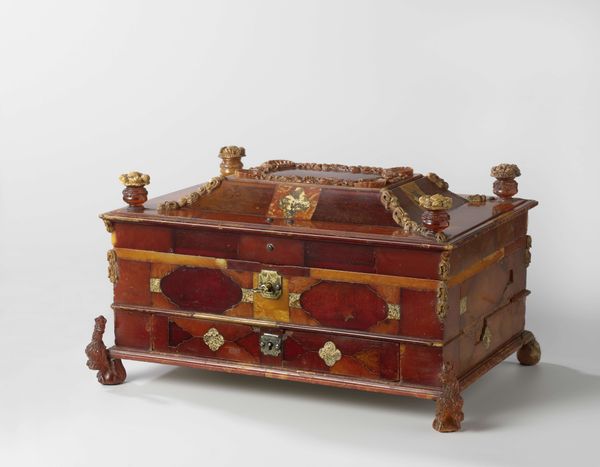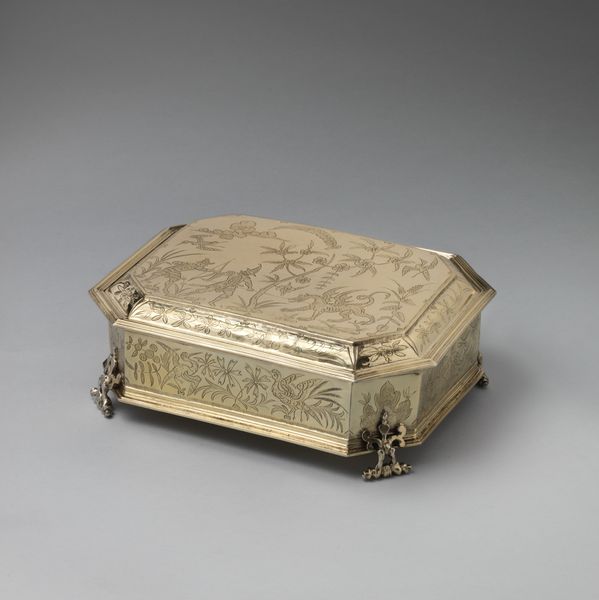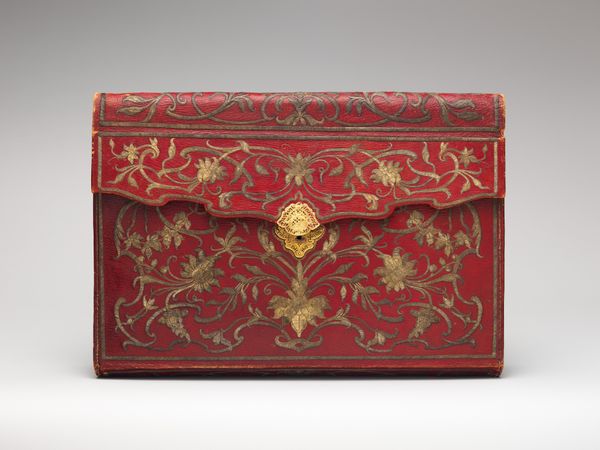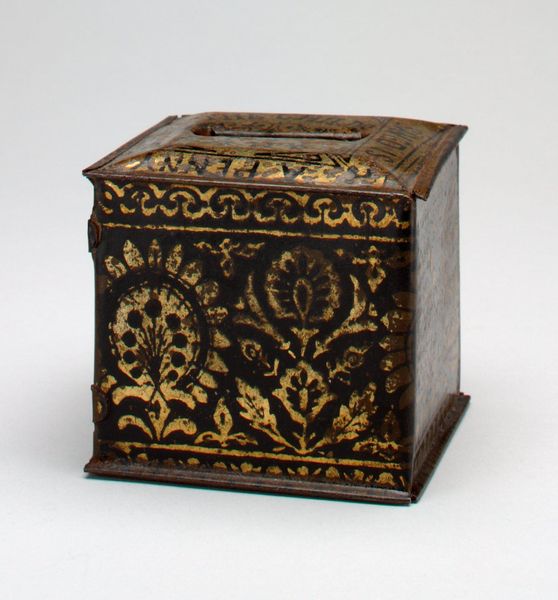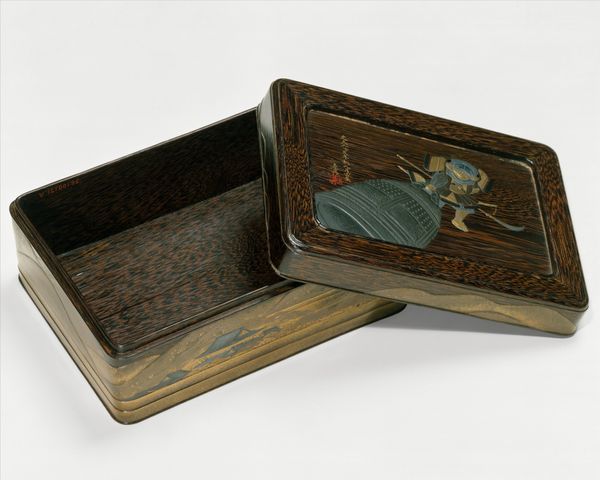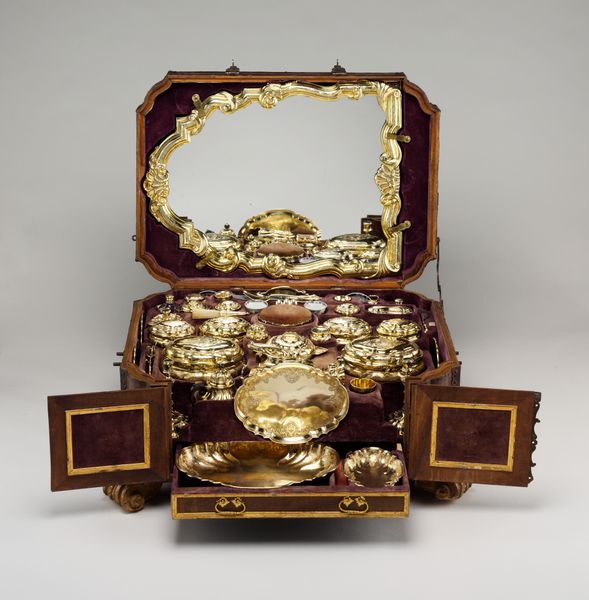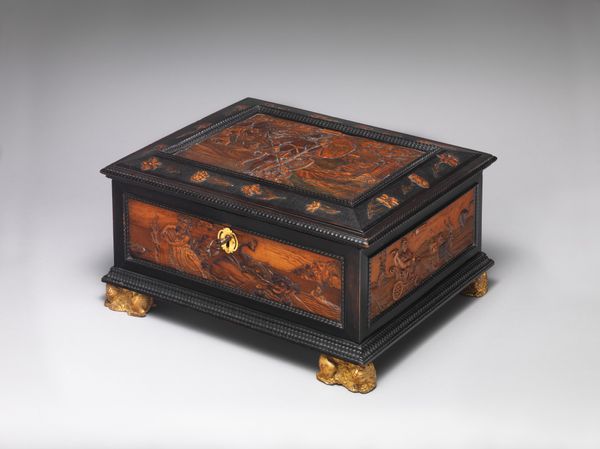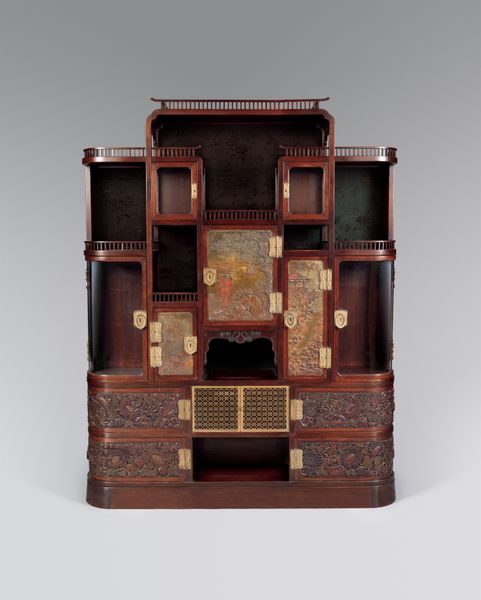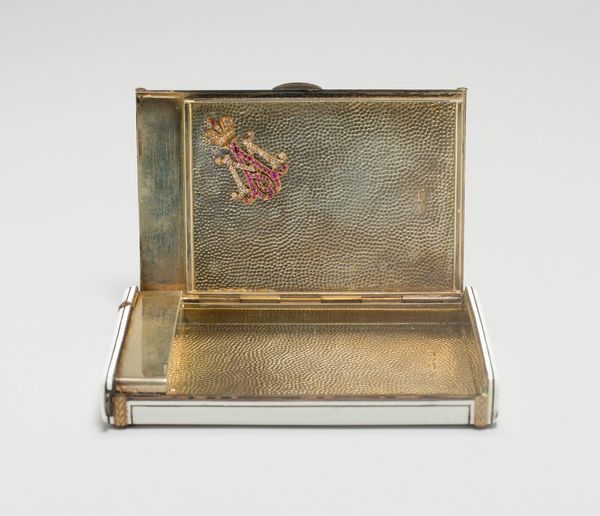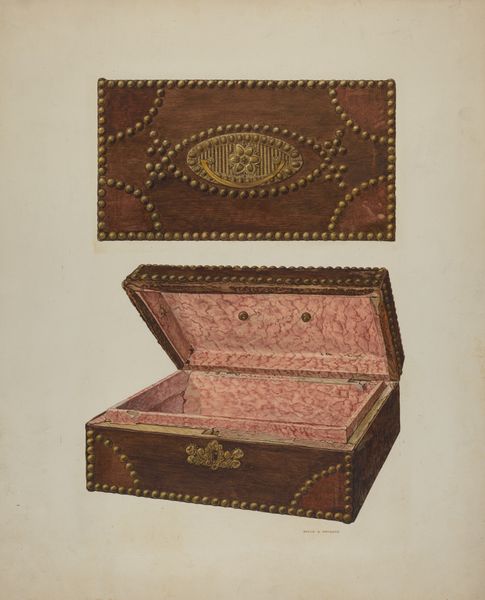
Langwerpig kussen bestaande uit twee gelijke helften, bekleed met groen fluweel en op de hoeken voorzien van grote, met groene zijde omwonden eikels, slot van messing middenvoor, binnenwerk van hout met deksels bekleed met bedrukt leer c. 1580 - 1620
0:00
0:00
mixed-media, metal, textile, wood
#
portrait
#
mixed-media
#
metal
#
textile
#
11_renaissance
#
wood
#
northern-renaissance
#
decorative-art
#
miniature
Dimensions: length 22 cm, width 37.5 cm, height 11.5 cm, height 0.1 cm, length 13 cm, width 8 cm, thickness 0.1 cm, length 7.8 cm, width 4.5 cm, length 4.9 cm, width 11 cm, length 7.5 cm, width 11 cm, width 11 cm, width 8 cm, length 3.5 cm, length 1.5 cm, length 34.5 cm, width 19 cm
Copyright: Rijks Museum: Open Domain
This oblong cushion box, made by an anonymous maker, is covered in green velvet and trimmed with large acorns. It’s a remarkable combination of materials that tells us a lot about its original owner. The velvet suggests luxury. To produce it, you need a special loom, a skilled weaver, and access to dyestuffs. The acorns, wrapped in silk, are similarly labor-intensive and signal refinement. Then there’s the box itself, made of wood covered in printed leather, with a brass lock. Everything about this object speaks to a culture of display, where even functional items were opportunities for ostentatious consumption. We can imagine the original owner, wealthy and concerned with appearances, carefully arranging their belongings inside. This object, therefore, is more than just a box. It's a window into a world where materials, making, and social status were inextricably linked, blurring the lines between craft and fine art.
Comments
No comments
Be the first to comment and join the conversation on the ultimate creative platform.
